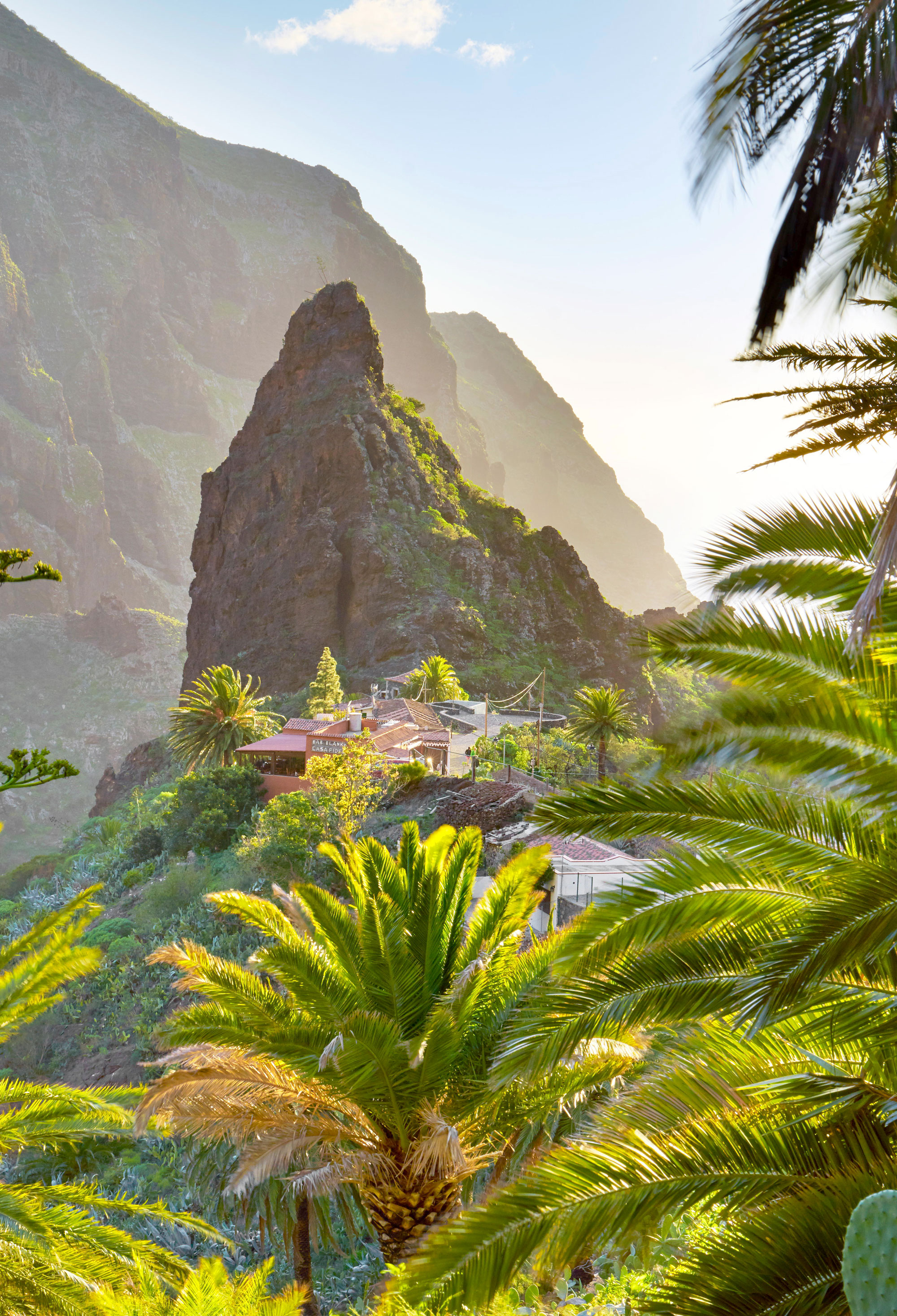When you picture Egypt, chances are pyramids come to mind. There’s a reason for that: The awe-inspiring Great Pyramid of Giza — built around 2500 BCE and the only remaining Wonder of the Ancient World still standing today — is one of the world’s most fascinating tourist destinations. But Egypt isn’t the only place to see great pyramids. Around the world, ancient civilizations constructed these architectural marvels with the limited tools available to them at the time. Here are eight places (besides Egypt) to see amazing pyramids around the world.
Tikal, Guatemala
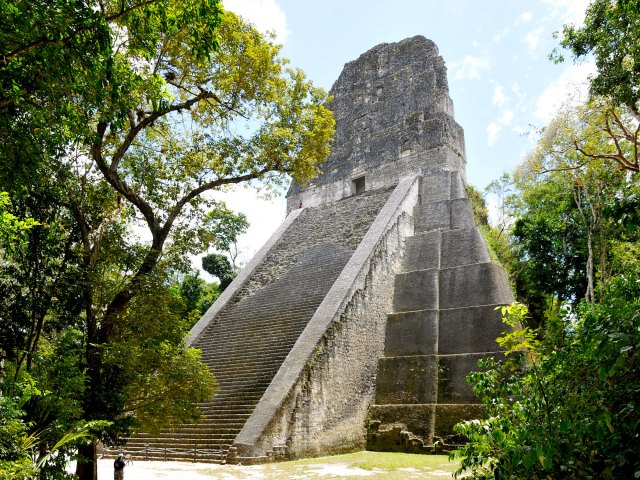
The ancient Maya city of Tikal was once home to almost 100,000 people at its peak between 600 CE and 800 CE. Some of the pyramid temples in the ancient city remain, and a handful of them poke above the dense rainforest canopy in modern-day Guatemala. One of them — the impressive Templo I — is also known as the “Temple of the Great Jaguar.” Visitors are allowed to climb its steps to take in the spectacular view from the top. The tallest pyramid in Tikal is the 70-foot Templo IV, a soaring limestone structure that the Maya called the “Temple of the Two-Headed Snake.” Dating to 741 CE, Templo IV is believed to have been constructed in honor of the 27th ruler, Yik’in Chan K’awiil.
More from our network
Daily Passport is part of Optimism, which publishes content that uplifts, informs, and inspires.
Mexico

Numerous pyramids are scattered across the Yucatán Peninsula, including those within the ancient Maya cities of Coba and Uxmal. The most famous, of course, is at the UNESCO World Heritage Site of Chichén Itzá. This striking landmark is known as “el Castillo,” or the Castle. It is over a thousand years old, but was constructed on top of an older structure. One of the most impressive aspects of its design is witnessed during the spring and autumnal equinoxes, when triangular shadows fall on its stepped flank, creating the illusion of a serpent. This is intentional, as the pyramid is dedicated to Kukulkan, a serpent deity prevalent in many Mesoamerican religions.
But Mexico’s pyramids aren’t confined to the Yucatán Peninsula. The Great Pyramid of Toniná in Chiapas is the tallest Maya temple ever uncovered. At Teotihuacan, located close to Mexico City, you’ll find the Pyramids of the Sun and Moon. To the southwest of the capital close to the city of Puebla, pyramid enthusiasts will want to make the trip to the Great Pyramid of Cholula, which is the largest pyramid in the world in terms of volume. Much of this mega-structure is underground, as successive civilizations built on top of what they found. This unique construction has led to the pyramid being described as six pyramids in one.
Peru

Archaeology in Peru doesn’t begin and end with Machu Picchu. Though the country’s most famous historical site doesn’t have a pyramid itself, you can find them elsewhere in the country. One of the most significant areas is the region of Túcume. Often referred to as South America’s “Valley of the Pyramids,” Túcume is home to 26 mud-brick pyramids surrounded by carob forest. These monuments are thought to date from 700 CE.
A three hour-drive north of Lima, you’ll reach the ruins of Caral, dubbed the “First City of the New World.” There, a sizable archaeological site contains what’s left of six ancient pyramids, the largest of which is the Pirámide Mayor, standing almost 100 feet tall. Using radiocarbon dating, archaeologists estimate that the pyramid might even be 5,000 years old.
Meroë, Sudan
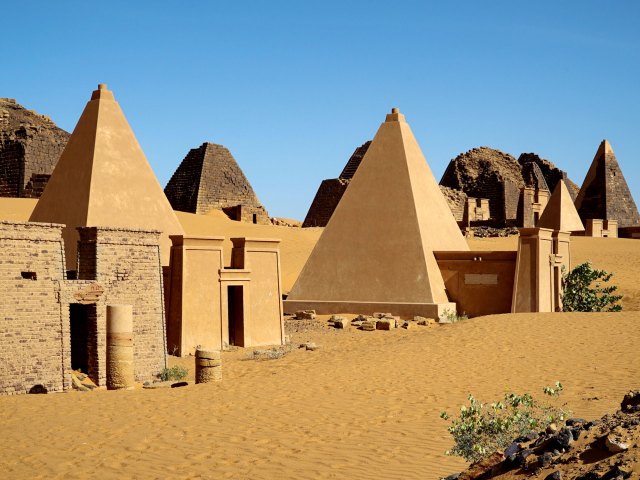
Egypt’s neighbor Sudan has more pyramids than any other country in the world: an estimated 350 can be found clustered across five sites. The best-preserved are at Meroë, an official UNESCO World Heritage Site. They once formed part of Kingdom of Kush, an ancient Nubian civilization that thrived from 300 BCE until about 350 CE.
As with the Egyptian pyramids, the sandstone structures at Meroë were built as tombs for royalty and other prominent members of nobility. However, these pyramids are smaller than those over the border in Egypt — the Great Pyramid of Giza is about four times as tall. Despite the wealth of treasures this archaeological site holds, Meroë receives relatively few visitors due to the ongoing civil unrest in the country.
Koh Ker, Cambodia

You’ll find the temple complex of Koh Ker deep in the Cambodian jungle. It lies about 70 miles north of the Angkor Wat temple complex and was the capital of the Khmer Empire in the 10th century. Of the ruins that remain, the most impressive is a seven-tiered temple called Prang. It features elaborate sandstone carvings and is the showstopper of the Prasat Thom group at the rear of the site.
Prang is likely to have been the state temple of Angkorian King Jayavarman IV and stands around 120 feet tall. Historians estimate that a 13-foot-tall lingam, a symbol of the Hindu god Shiva, once stood on top. If you visit Koh Ker, it’s possible to climb stairs up some of the temples. The views overlooking the surrounding jungle at the top are extraordinary.
Rome, Italy
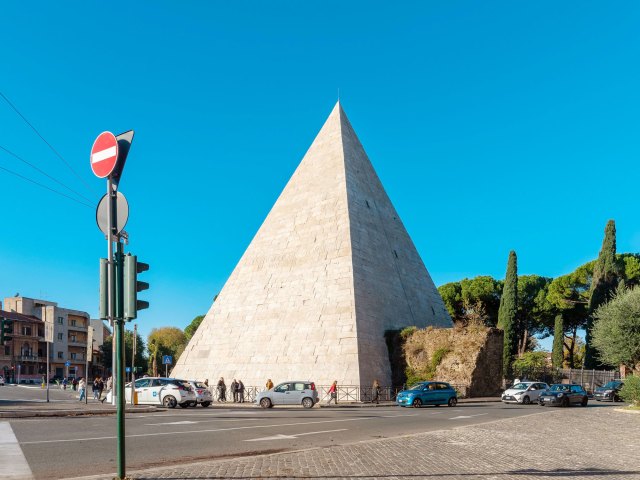
You might be surprised to learn that the Pyramid of Cestius in Rome was the tomb of a magistrate rather than an emperor. When it was erected in 12 BCE, this steep, impressive pyramid would have been located in open countryside. A few hundred years later, it was incorporated into the city’s Aurelian Walls as a triangular bastion.
The ancient Romans constructed the Pyramid of Cestius using bricks and cement on a travertine base. Then, they encased the bricks with slabs of white marble. Though it bears the name of Gaius Cestius, the pyramid was believed by locals to be the tomb of Remus, one of the two mythical founders of Rome. It wasn’t until the 1660s that the vegetation that had concealed the inscription was cleared and the truth was revealed.
Caracol, Belize
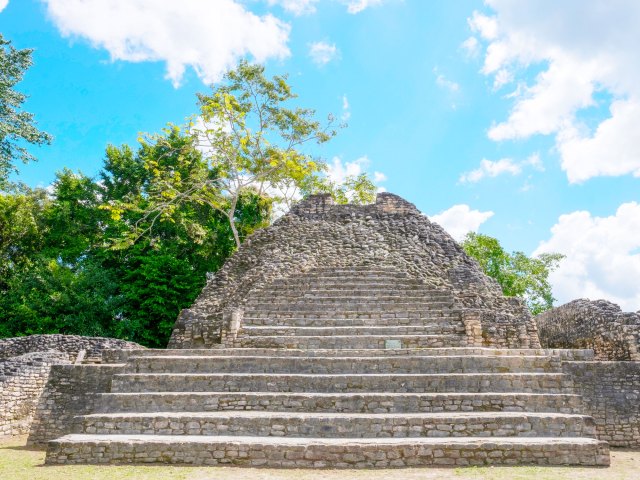
Numerous Maya ruins can be found across Belize. In its heyday, the ancient Maya city of Caracol (“the Snail”) had a population nearly twice that of present-day Belize City, which has a current population of 61,400. Today, its star attraction is a 141-foot-tall pyramid called Caana, or “Sky Palace.” For those brave enough to climb its many steps, the pyramid provides the ideal vantage point to survey the rest of this sprawling archaeological site.
El Castillo, another pyramid at Xunantunich archaeological site in Belize, is another reminder of the influence the Maya civilization had on Central America. Within Belize’s borders, only Caracol’s Sky Palace is taller; this one is nearly 130 feet tall. Construction began at the site in about 800 CE. This interesting pyramid features detailed reliefs of scenes depicting the Maya tree of life, as well as Maya gods and the royal family, though some of what you’ll see are replicas rather than the real thing.
Tenerife, Canary Islands

Strictly speaking, the Pyramids of Güímar, or Majanos de Chacona, on the island of Tenerife in the Spanish Canary Islands shouldn’t be classified as ancient. Six pyramids exist, made of blocks of lava rock, and it’s highly probable — though not certain — that they date from the 19th century. But mystery surrounds these pyramids and no one quite knows how or why they were put there.
Some famous names have offered theories about their origins, including Norwegian explorer and anthropologist Thor Heyerdahl best known for his work on Easter Island. Though he was convinced the pyramids were many centuries old, shards of pottery recovered from the lower layers of the pyramids didn’t support this theory.
More from our network
Daily Passport is part of Optimism, which publishes content that uplifts, informs, and inspires.






